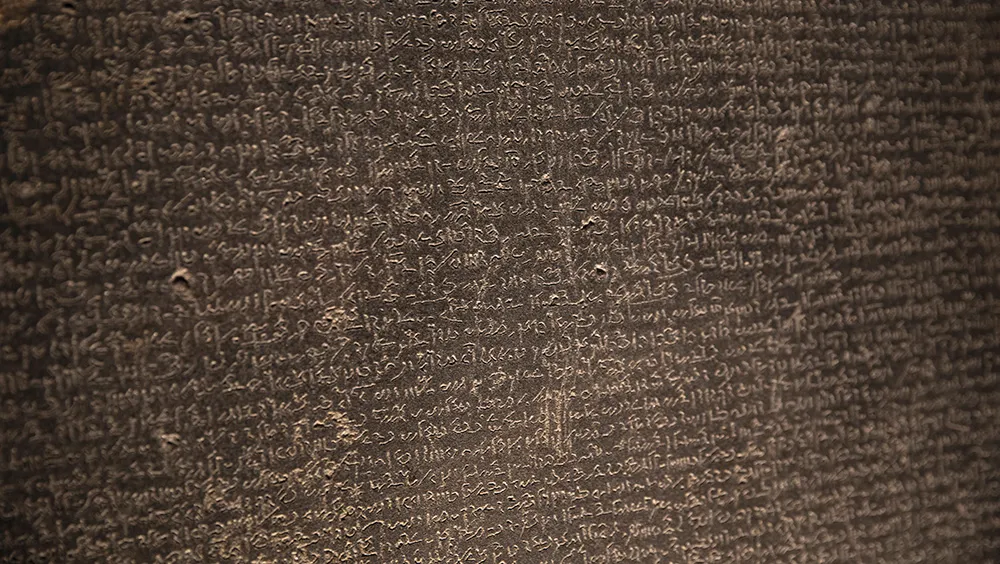Ancient Egyptian hieroglyphs fell out of usage with the last known inscription in AD 394, and the knowledge of how to read them was lost. But that changed with the discovery of the Rosetta Stone.
Discovered in 1799, the Rosetta Stone was the key to translating Egyptian hieroglyphs. The stone slab is inscribed with the same text in three different scripts: Greek, ancient Egyptian hieroglyphs, and 'demotic', a cursive form of ancient Egyptian writing.
The text was a legal decree from Memphis, Egypt. The final line reads: "This decree shall be inscribed on a stela of hard stone in sacred and native [i.e., hieroglyphic and demotic] and Greek characters and set up in each of the first, second and third [-rank] temples beside the image of the ever-living king."
Read more:
- How we deciphered Ancient Egyptian hieroglyphs
- Rosetta Stone: A history of translating ancient Egyptian hieroglyphs
- Who deciphered Egyptian hieroglyphs?
Where was the Rosetta Stone found?
The Rosetta Stone was discovered by Napoleon Bonaparte's military forces following the invasion in 1798. While rebuilding an old fort in the Nile Delta in July 1799, military engineers found the stone and sent it to Napoleon's team of scholars and scientists in Cairo.
Who deciphered the Rosetta Stone?
There was a number of scholars involved in deciphering the Rosetta Stone, the most important of whom were Thomas Young and Jean-François Champollion.
Young realised that demotic was derived from hieroglyphic and deduced a hieroglyphic ‘alphabet’ that proved partially correct. He wrote an article on his work in the Encyclopaedia Britannica.
This article was most likely the inspiration for Champollion's work, in which he discovered that the hieroglyphic and demotic scripts are a complex mixture of phonetic and non-phonetic signs.
Young’s article included his sign-for-sign comparison of the Rosetta Stone’s hieroglyphic cartouche thought to spell the name of the Egyptian king Ptolemy with the corresponding name written in the Greek alphabet as ‘p, t, o, l, m, e, s’. The key to further progress was a copy of a bilingual obelisk inscription from Philae sent to Paris in early 1822. The base block inscription was in Greek, the column inscription in hieroglyphic.

In the Greek, the names of Ptolemy and Cleopatra were mentioned; in the hieroglyphs, only two cartouches occurred – presumably representing the same two names. One of the cartouches was almost identical to one form of the cartouche of Ptolemy on the Rosetta Stone.
There was also a shorter version of the Ptolemy cartouche on the Rosetta Stone. Champollion decided that the shorter cartouche spelt only Ptolemy, while the longer (Rosetta) cartouche must have an additional royal title.
Following Young, he then proceeded to guess the phonetic values of the hieroglyphs in the second, unknown cartouche on the Philae obelisk.
There were four signs in common, those with the values ‘l, e, o, p’, but the phonetic value ‘t’ was represented differently. Champollion deduced correctly that the two signs for ‘t’ were homophones, that is, different signs with the same phonetic value (compare in English, Gill and Jill, recognize and recognise).
He now had the basis for an essentially correct hieroglyphic ‘alphabet’.
- This article first appeared in issue 257 of BBC Science Focus–find out how to subscribe here
